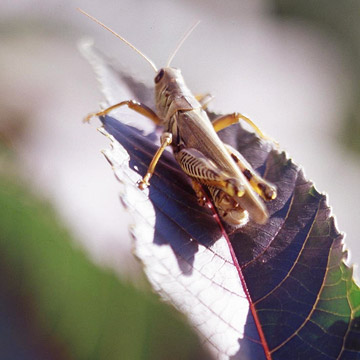






Common throughout much of North America, grasshoppers are familiar insects with big appetites. They jump from plant to plant using powerful back legs and glide with wings.
You might see grasshoppers in shades of green, gold, or brown. They chew ragged-looking holes in plant leaves (and may also eat window screens). Unfortunately, they're one of the toughest insects to fight off.
continue reading belowAttract beneficial insects: Plant flowers, such as marigolds, calendula, sunflower, daisy, alyssum, or dill nearby to attract beneficial insects. A few good bugs, such as robber flies, attack grasshoppers.
Grasshopper diseases: There's a grasshopper disease called Nosema locustae that can help. It can be slow to kill the pests, however, and only affects young grasshoppers. Not all grasshopper species are susceptible to the disease, either. To be effective, it needs to be used in areas where grasshoppers lay their eggs.
Insecticides: A number of insecticides also effectively kill grasshoppers. Look for products containing carbaryl or permethrin. Insecticides don't usually offer complete control because grasshoppers travel so much that the products you use may not kill the insects until after they've left your garden and gone to someone else's. Insecticides also won't keep new grasshoppers from coming into your garden.
Note: In some years, the weather is the best control for grasshoppers. Cool, wet weather in early summer causes young grasshoppers to starve to death.
Copyright © www.100flowers.win Botanic Garden All Rights Reserved